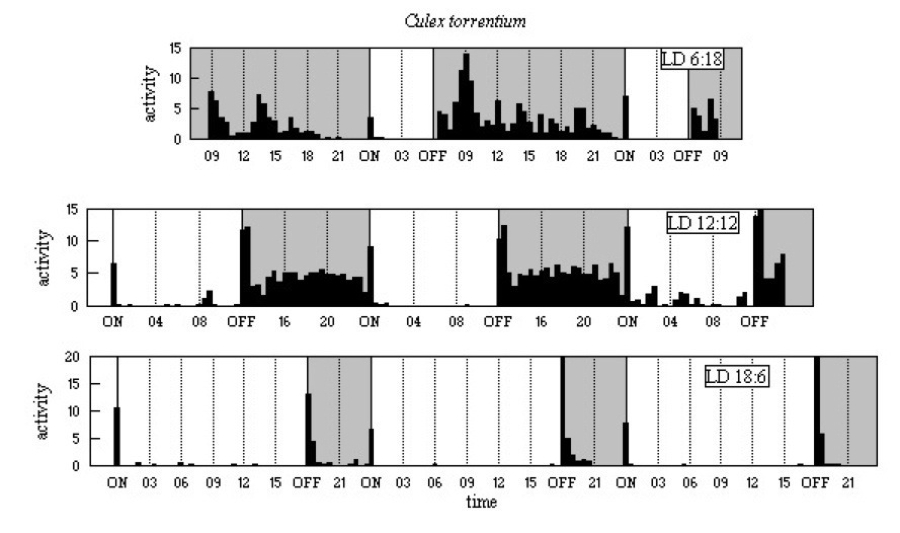Biological Clocks in Mosquitoes
|
 The type locality was Swartza River, Germany,
and the distribution was given by Stone et al. (1959) as
northern Europe, south into France. Natvig (1948) gave a northern limit
of 67°N, in Norway, and a southern limit of about 45°N, in the Crimea.
Service (1968) described taxonomic characters enabling differentiation
of Cx. torrentium and Cx. pipiens pipiens.
The type locality was Swartza River, Germany,
and the distribution was given by Stone et al. (1959) as
northern Europe, south into France. Natvig (1948) gave a northern limit
of 67°N, in Norway, and a southern limit of about 45°N, in the Crimea.
Service (1968) described taxonomic characters enabling differentiation
of Cx. torrentium and Cx. pipiens pipiens.
Experimental material
Adult females were reared from larvae collected from a pool at Morden
Bog, Dorset, England (50°41'N) on the evening of 22 July 1968 and
reared in natural daylight (sunrise 0516h and sunset 2056h BST,
daylength 15h40m). They were used in experiments from 9 August.
Recordings were made with light-off at 2100h BST.
Experimental regimes
LD 6:18, five females, recorded for days four and five.
LD 12:12, five females, recorded for days three to five.
LD 18:6, four females, recorded for days three to five.
Results and discussion
The activity patterns are shown in Figure A19 below. It is strongly
night-active, with almost no activity in light. E and M peaks
are clear in all three LD regimes but why there is relatively little
activity between the peaks in LD 18:6 is not obvious.
Figure A19

Service (1971) described the light periodicities and vertical
distribution of Cx. torrentium in southern England. There was
an increase in flight activity around sunset in June-August,
1900-2000h, and a small peak at 0500-0600h (about 2h before sunrise).
Snow (1990) stated that females feed exclusively on avian blood and
overwintering is as adult females, the resting sites are unknown but
are not those of Cx. p. pipiens.
|
©1998, 2010 - Brian Taylor CBiol FSB FRES 11, Grazingfield, Wilford, Nottingham, NG11 7FN, U.K. Comments to dr.b.taylor@ntlworld.com |
href="cxtor.htm"